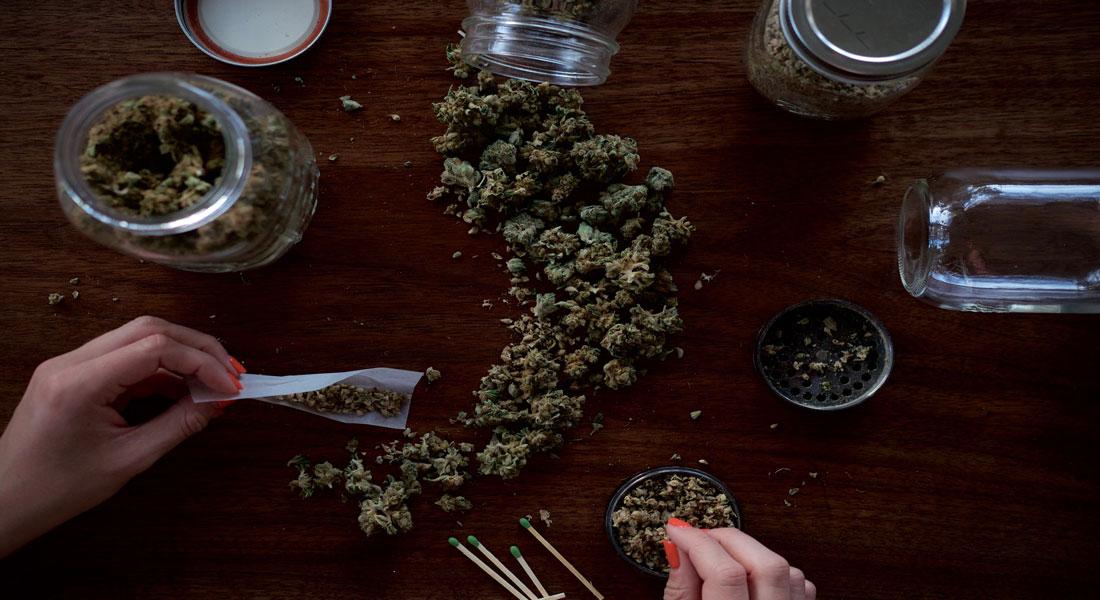Cannabis Credit

On October 17, 2018 the Canadian government passed the Cannabis Act, making the purchase, possession, cultivation, and consumption of limited amounts of marijuana legal for Canadian citizens.
In so doing, we became only the second country in the world (after Uruguay — that vanguard of enlightened social awareness) to legalize recreational cannabis use. Although criticizing every level of government, at every turn, is as Canadian as poutine and milk in a bag, every once in a while a level of government gets something almost-not-totally-wrong.
As we approach the three year anniversary of Canada’s legalization of marijuana, it is worthwhile to note that the predicted disintegration of modern Canadian society has not yet occurred.
Communities are not reeling with the foretold mass homelessness and compounded addiction problems that decriminalization was to bring; no evidence has established an increase in the number of impaired driving accidents or fatalities attributable to marijuana consumption (drug use in accident statistics is only collectively tracked with alcohol and drug impairment statistics are virtually impossible to isolate); and schools have not suffered the truancy and disciplinary problems forecasted by education administration experts.
In short, no significant social harm has been identified at all with the change in legislation.
Many politicians decried the anticipated seedy storefronts that would lead to the decline of neighbourhoods and the distasteful and unsightly clientele whose aimless loitering would intimidate children, increase crime, and devalue neighbourhoods.
Locally, the municipalities of LaSalle and Tecumseh only just passed by-laws this spring and summer to reverse their initial opt-out decisions.
In the United States, formal Attorney General Jeff Sessions was on record, in 2017, as saying marijuana was “devastating our kids and devastating whole communities”, that “good people don’t smoke marijuana” and that the plant was only “slightly less awful” than heroin (in which case, I can make a stronger argument for broccoli or cauliflower).
Have you seen, or been inside one of these dispensaries?
They are virtually all new or retrofitted commercial stores, cleverly named, with impressive signage, tastefully obscured windows, modern cladding, and sleek colours. They epitomize the words of Ernest Hemingway as “clean, well-lighted space.”
At the worst possible time for retail storefronts and merchant plazas during the pandemic, they have been a stirring boon to local property owners and commercial landlords.
Inside, they are classy showrooms with glass display cases, digital scrolling menus of product, secure checkout, plain and opaque packaging, all admirably staffed with knowledgeable and helpful salespeople. They have rigorous security protocols with manned entry personnel checking ID, redundant alarm systems, mandatory daily inventory counts and security cameras throughout (which, by law, are required to be functioning, and perpetually recording, with rules about maintenance of daily logs and preservation of footage).
I can’t be the only one to notice the virtual explosion of new retail outlets.
As of April 1, of this year there were 572 retail outlets in Ontario with applications for a further 940 in the approval pipeline. The Alcohol and Gaming Commission of Ontario’s (AGCO) website shows 46 open in the local municipalities including, and west of, Chatham, with another 26 pending applications. It predicts that Ontario will have as many as 1,000 retail outlets before Labour Day.
A Statista.com study in 2017 surmised that an average Canadian dispensary generated about $3 million in sales against $1.2 million in operating expenses.
Nationally, it is predicted that legal sales of marijuana have captured 44.1% of the previous black market (I say “previous” because studies indicate that legalization has likely increased total consumption levels in both markets, although less so in the black market).
Ontario’s cannabis tax revenue for 2021-22 (its share of federal cannabis excise duties) is predicted to be $420 million, in addition to $170 million more from direct sales by Ontario Cannabis Retail Corporation, the government’s own, and the only, online sales provider.
In 2020 alone, Canadian sales of cannabis products topped $2.6 billion, up 120% from the year before. These sales — representing 35 tonnes of cannabis for the year — are divided by the following types: dried flower accounts for 59% of all sales; vapes 16%; pre-rolls (actual marijuana cigarettes) 12%; edibles 4%; oils 4%; capsules and concentrates each 2%.
Surprising, despite millions of dollars spent developing cannabis-infused drinks over the last year, they only account for just under 2% of sales.
Socially, cannabis is slowly gaining acceptance.
Government of Canada survey results show that for the 2020 year, Canadians between the ages of 16 and 24 reported using cannabis twice as much as those over 25 (48% compared to 24%), with 31% of male Canadians partaking, against 23% of female Canadians. Reported use increased over the previous year among those 25 years and older (by 3%), and among both sexes (both increased by 2%). Surprisingly, regular use (defined as daily or near daily), however, was highest among Canadians 25 and older, than by either 16 to 19 year olds (21%) or by 20 to 24 year olds (23%).
Wherever you come out on the use of cannabis, it cannot be denied that the Canadian regulatory experience, although not without hiccups — such as kinks in the initial supply chain and enforcement of potency rules — has been largely successful in appropriating much of the previously illicit sales into tax revenue. As well as providing a safer supply of cannabis for all users, reducing the number of Canadians with criminal records (with the attendant savings to the criminal justice system), and keeping the legal supply carefully controlled, monitored and away from minors — to say nothing of the draw-dropping investments into the sector, employment opportunities throughout the production and supply chain, and newfound source of revenue.
From where I sit, though, the single greatest accomplishment of this legislation is a dent in the ever-paternalistic, alarmist and infuriatingly unimaginative conservative mindset that seems to pervade government policy in all matters of social freedom. Now, if only the provincial government could release its ridiculous monopoly on retail alcohol sales…


